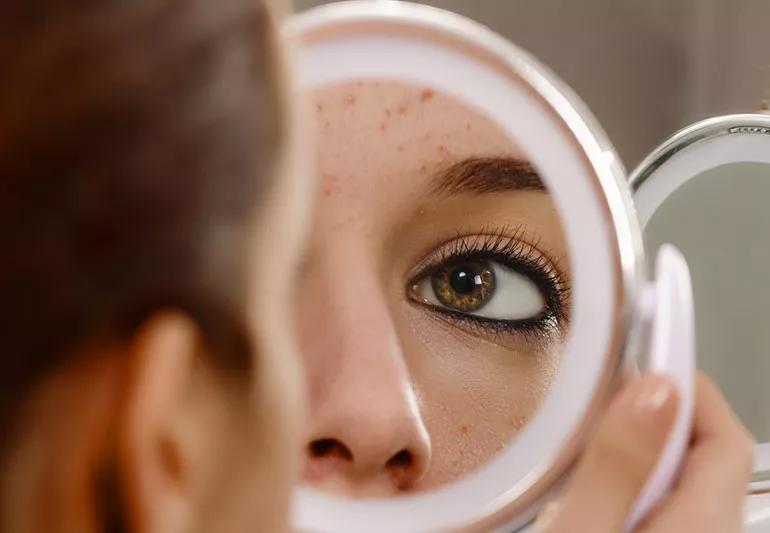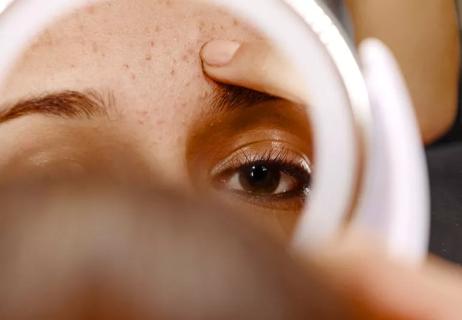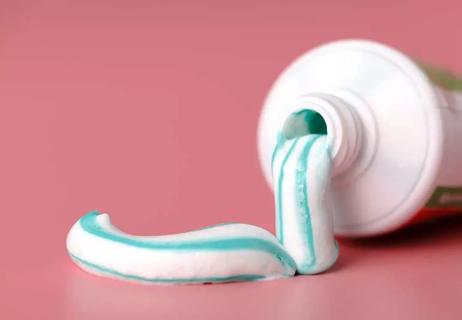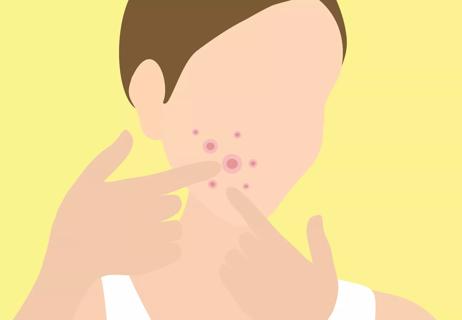Benzoyl peroxide spot treatments are the gold standard, but they’re not the only game in town

We’ve all been confronted by an unwelcome pore pirate on a big, important day. It’s incredibly frustrating. The impulse to launch a counterattack may be strong, but — as dermatologists and children’s books alike have told us for decades — violence is never the answer.
Advertisement
Cleveland Clinic is a non-profit academic medical center. Advertising on our site helps support our mission. We do not endorse non-Cleveland Clinic products or services. Policy
So, you can’t pop your pimple. What can you do?
While there are no instantaneous fixes out there, there are many ways to shorten a pimple’s visit. We’ve compiled a list of things you can do to clear your skin up — and an equally important list of things not to do.
If you find yourself in a pimple predicament often, you’ll want to make an appointment to see a dermatologist. They can develop a maintenance plan to help keep your skin clear. But for an occasional breakout, there are effective ways to tame them at home.
The best way to make a zit go away fast is to apply a dab of benzoyl peroxide, which you can buy at a drug store in cream, gel or patch form, says dermatologist Shilpi Khetarpal, MD. It works by killing bacteria that clog pores and cause inflammation. It’s available in concentrations ranging from 2.5% to 10%.
“It’s inexpensive, it’s been around for many years and it’s very effective,” Dr. Khetarpal says.
But there’s one caveat: If you keep using it over and over again on the same spot, it may dry out or irritate your skin. So, if your skin is sensitive, choose a product with a lower concentration of benzoyl peroxide.
Salicylic acid is a beta-hydroxy acid that helps both unclog pores and gently exfoliate your skin. It’s used in all sorts of acne-busting products, from cleansers, lotions and toners to serums and pimple patches. Whether you’re locked in a battle of wits against a single whitehead or a horde of them, it’s always a good idea to have salicylic acids somewhere in your daily skin care routine.
Advertisement
Studies have shown that a small amount of diluted tea tree oil can combat acne. But Dr. Khetarpal warns that a small percentage of people are allergic to it.
“If it works for you, great, but if you put it on your skin and find out you’re allergic to it, you’re going create a whole other problem,” she says. That’s why it’s important to patch-test any tea tree oil products on your inner arm before putting them on already-irritated skin.
Many people who wear makeup go to great lengths to hide unsightly bumps. While it’s perfectly fine to wear makeup over acne, it might not be the best idea if you have highly sensitive skin.
The good news: A lot of cosmetic companies make primers, concealers, foundations and other products that contain salicylic acid. Most explicitly state on the packaging that they’re for acne and oil control.
If you’re not feeling the idea of buying specialized skin care products to use on your breakouts, be sure to check that any makeup you’re using isn’t oil-based or comedogenic. They’ll clog your pores and exacerbate the skin problems you’re already dealing with.
Whatever makeup you use and however heavily you apply it, it’s important to make sure you get all the products washed off your face before bed and that you regularly clean and refresh both your makeup and makeup applicators. If you don’t, you’ll be covering up your acne … with acne-causing bacteria.
It’s one of the least affordable options on this list, but it’s still worth mentioning: There are many at-home red and blue light therapy devices available for purchase these days. Red light helps reduce inflammation, while blue light combats the acne-causing bacteria that take up residence on our faces.
Sometimes, the problem isn’t so much the pimple as it is the pain. In those cases, ice can help temporarily quell the inflammation. But be warned: Dr. Khetarpal says the effect will wear off quickly. Similarly, holding a warm washcloth to the area may temporarily soothe irritated skin, but it won’t do anything for the pimple itself.
“Ice and heat are just going to temporarily alleviate the discomfort, but medication is going to be more effective for actually getting rid of the pimple,” she adds.
These ideas are all great, but there are some occasions in life where you really don’t want to be sporting a monster zit — times like your wedding day, prom night or even your high school reunion. While it’s never guaranteed you’ll be able to get an appointment, it can’t hurt to ask if your dermatologist would be willing to inject the pimple with cortisone or an antibiotic. This procedure will usually make a visible difference in the blemish in 24 hours.
Advertisement
When it comes to skin care, the bad ideas frequently outweigh the good. We’ve compiled some of the most common bad advice for dealing with problem pustules.
While modern toothpaste contains ingredients like alcohol or baking soda that may help dry out a pimple, they also contain other ingredients that aren’t intended to be put directly on your face. Dr. Khetarpal cautions that using toothpaste to treat a pimple could possibly irritate your skin.
Some people swear by crushing up an aspirin, putting a few drops of water on it and dabbing that mixture onto their pimple.
Aspirin’s active ingredient, acetylsalicylic acid, is similar to salicylic acid. But according to acne treatment guidelines published in the Journal of the American Academy of Dermatology, there’s limited clinical evidence that acetylsalicylic acid is effective for treating acne.
“Many dermatologists find that it just dries out the skin without giving much of a benefit,” Dr. Khetarpal says.
Appealing as a “scorched earth” strategy might sound for dealing with acne, drying out the skin with astringents like alcohol or witch hazel is a no-go. These products can further irritate your skin, which will only make your acne worse. Opt instead for a soothing toner.
Advertisement
We’ve already told you not to put toothpaste on your pimples, but that’s not the only bad advice you’re going to run across on the internet. Here are a few other things you should keep away from your face:
You can watch pimple-popping videos on the internet to your heart’s content, but Dr. Khetarpal recommends against trying these trends in real life.
“Any manipulation of a pimple can lead to more inflammation, which can increase the risk of scarring,” she explains. “And your hands are dirty, so you’re going to introduce more bacteria and potentially make it worse.”
Your best bet is to spot-treat the pimple with benzoyl peroxide and then leave it alone.
“Wearing makeup and covering it up is not a problem, but don’t poke, pick or squeeze it,” Dr. Khetarpal reiterates. “It will resolve on its own.”
We’ve all had our confidence laid low by a face volcano from time to time. It’s no fun. If you’re looking for quick ways to zap a zit, the best place to start is a benzoyl peroxide spot treatment.
And there are lots of other things you can do to move your blemish along, from icing and heating your skin and using salicylic acne cleansers to blue light therapy and cortisone injections. Just be sure not to pop your pimple, and to steer clear of the many home remedies touted on the internet — they’re like to do more harm than good.
Advertisement
Learn more about our editorial process.
Advertisement

‘Zit stickers’ can help heal a new or popped pimple, but they’re limited when it comes to managing acne

Popping these pimples is not an option

It can actually make your blemish worse, not better

Clean hands and gentle pressure are critical — but it’s better to leave those zits alone

Early attention to skin wounds can help minimize their appearance later

Several conditions, like vitiligo and fungal infection, can cause a loss of pigmentation, leading to white spots or patches on your skin

Moisturizing, running a humidifier and adjusting your showers may help keep itchiness and irritation at bay

Glycolic acid benefits skin tone, texture and pigmentation by exfoliating dead skin

Start having sex about 72 hours before ovulation, then at least every other day during your fertile window

Attachment theory suggests that your earliest relationships shape connections throughout your life

It isn’t a recognized mental health disorder, but research shows that problematic social media use can negatively affect your mental health, self-esteem and sleep